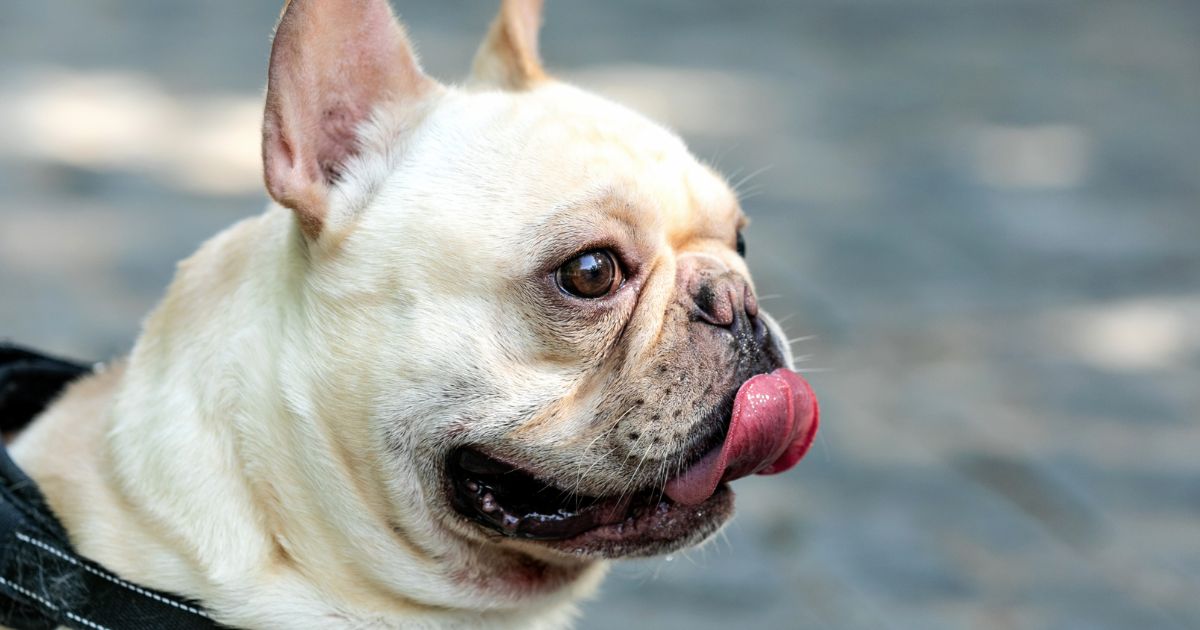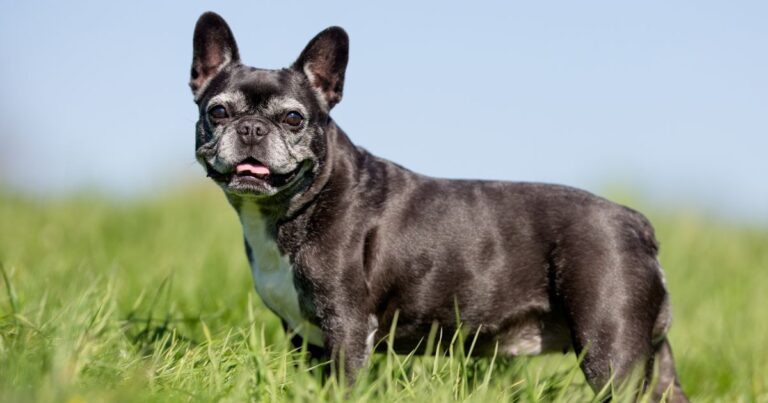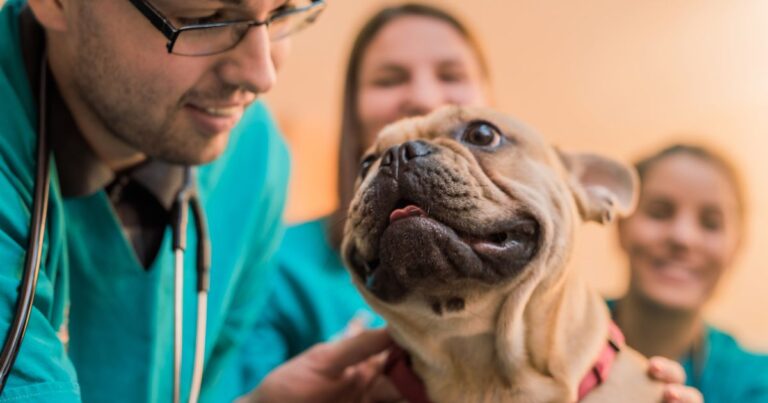French Bulldog Patellar Luxation
Table of Contents
French Bulldog Patellar Luxation
| Aspect | Details |
|---|---|
| Definition | Patellar Luxation is a condition where the kneecap (patella) dislocates or moves out of its normal position. |
| Common in | Small and dwarf breeds, including French Bulldogs. |
| Symptoms | Limping, abnormal gait, skipping or hopping while walking. |
| Causes | Mostly genetic, but can also be due to trauma or injury. |
| Treatment | Non-surgical treatments like physical therapy and weight management, or surgery in severe cases. |
Ever watched your Frenchie do a funny little hop and wondered if it’s their latest trick? Well, it could be a sign of ‘French Bulldog Patellar Luxation’. Dive in to discover what it means, why it happens, and how to help your four-legged friend!
Introduction
As a French Bulldog owner, one of the health issues you should be aware of is Patellar Luxation. This condition, often seen in smaller dog breeds like our beloved Frenchies, involves the dislocation of the kneecap, which can lead to discomfort and mobility issues. Understanding this condition, its causes, symptoms, and treatment options, can help you ensure the best possible care for your Frenchie.
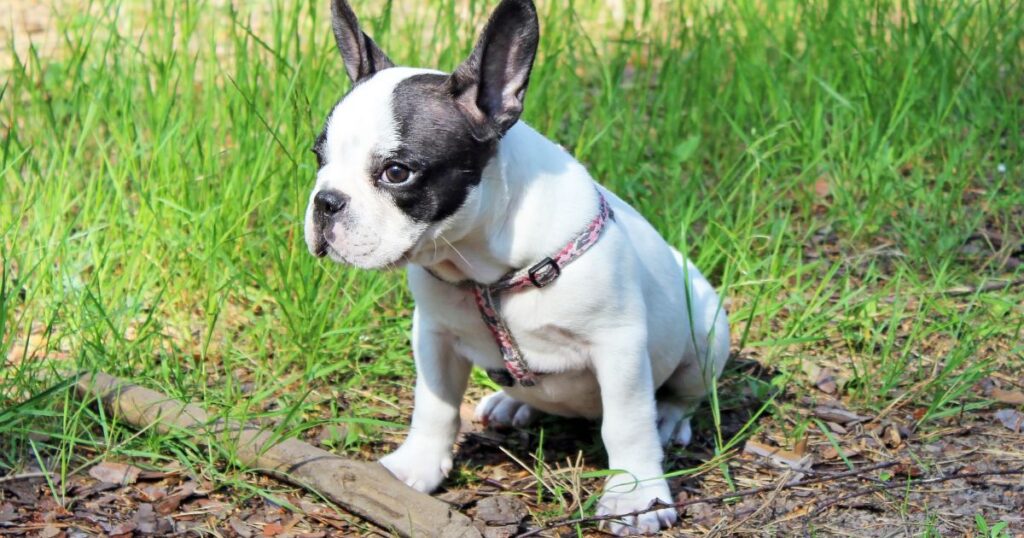
Patellar Luxation can be a challenging condition to manage, but with early detection, appropriate treatment, and plenty of love and care, your Frenchie can lead a happy and healthy life.
Understanding Patellar Luxation
Patellar Luxation, also known as luxating patella or knee dislocation, is a common health issue in French Bulldogs. It occurs when the dog’s kneecap (patella) moves out of its normal location in the groove of the thigh bone. This can cause pain and lameness, and in severe cases, it can lead to long-term damage to the joint. The condition can be present in one or both of the dog’s hind legs, and the severity can vary from mild to severe.
Why French Bulldogs are Prone to Patellar Luxation
You might be wondering why our adorable Frenchies are particularly susceptible to this condition. The primary reason is genetic. French Bulldogs, like other small and dwarf breeds, have a genetic predisposition to Patellar Luxation. This is due to the specific physical characteristics of these breeds, including the shape and alignment of their legs. However, it’s important to note that not all French Bulldogs will develop this condition, and a healthy lifestyle can help reduce the risk.
Signs and Symptoms of Patellar Luxation
Recognizing the signs of Patellar Luxation early can make a significant difference in your Frenchie’s quality of life. The most common symptom is lameness or an abnormal gait. Your Frenchie might skip or hop while walking, or they might suddenly lift a hind leg off the ground. In some cases, you might even notice your Frenchie’s kneecap moving out of place. If your Frenchie shows any of these signs, it’s crucial to consult with a vet for a proper diagnosis.
Signs of Patellar Luxation in French Bulldogs
| Sign | Description |
|---|---|
| Limping | The dog may start to limp or favor one leg over the other. |
| Skipping or hopping | The dog may skip or hop while walking, especially after exercise. |
| Sudden lifting of a hind leg | The dog may suddenly lift a hind leg off the ground while walking or running. |
| Visible kneecap movement | In some cases, you might notice the kneecap moving out of place. |
| Pain or discomfort | The dog may show signs of pain or discomfort, such as whining or avoiding movement. |
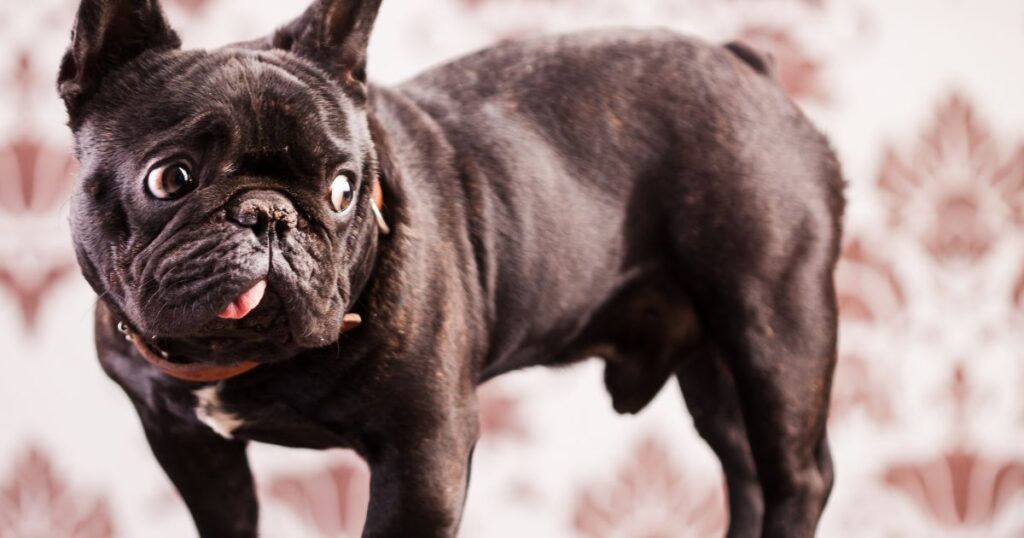
Diagnosing Patellar Luxation in French Bulldogs
If you suspect your Frenchie might be suffering from Patellar Luxation, it’s crucial to get a proper diagnosis. Your vet will perform a physical examination to check for signs of the condition. This might involve feeling the knee joint to see if the kneecap moves out of place. In some cases, X-rays or other imaging tests might be needed to assess the severity of the condition and to rule out other potential causes of your Frenchie’s symptoms.
Treatment Options for Patellar Luxation
Once diagnosed with Patellar Luxation, there are several treatment options available, ranging from non-surgical management to surgery. The best treatment for your Frenchie will depend on the severity of the condition and their overall health. Non-surgical treatments include physical therapy, weight management, and medications to relieve pain and inflammation. In severe cases, or when non-surgical treatments aren’t effective, surgery might be recommended.
Treatment Options for Patellar Luxation
| Treatment | Description |
|---|---|
| Physical Therapy | Exercises to strengthen the muscles around the knee joint. |
| Weight Management | Maintaining a healthy weight to reduce strain on the joints. |
| Pain Management | Medications to relieve pain and inflammation. |
| Surgery | In severe cases, surgery may be required to realign the kneecap. |
| Post-Surgery Rehabilitation | Physical therapy and controlled exercise to aid recovery post-surgery. |
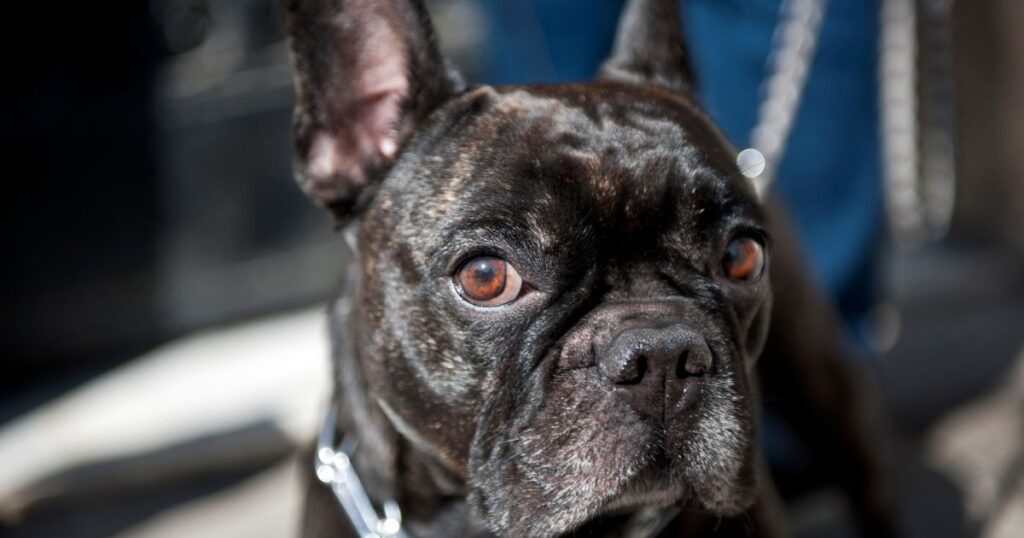
Top 5 Non-Surgical Treatments for Patellar Luxation
- Physical Therapy
- Weight Management
- Pain Management
- Controlled Exercise
- Joint Supplements
The Role of Surgery in Treating Patellar Luxation
In some cases, surgery might be the best option to help your Frenchie regain mobility and live a pain-free life. The goal of the surgery is to realign the kneecap and prevent it from dislocating again. This is achieved by deepening the groove in which the kneecap sits, and in some cases, realigning the attachment of the thigh muscles. While the thought of your Frenchie undergoing surgery can be daunting, it’s important to remember that this procedure can significantly improve their quality of life.
Rehabilitation and Recovery Post-Surgery
Post-surgery, your Frenchie will need a period of rehabilitation to recover fully and regain strength. This might involve physical therapy exercises, controlled walking, and in some cases, hydrotherapy. It’s crucial to follow your vet’s advice during this period to ensure a successful recovery. With time, patience, and the right care, your Frenchie can return to their usual playful self.
Top 5 Ways to Support Your Dog Post-Surgery
- Follow your vet’s post-operative care instructions.
- Keep your dog comfortable and quiet.
- Monitor the surgical site for signs of infection.
- Assist with physical therapy exercises.
- Provide a healthy diet and plenty of love and care.

Preventing Patellar Luxation in French Bulldogs
While Patellar Luxation can be genetic, there are still measures we can take to prevent or at least minimize the risk. Maintaining a healthy weight for your Frenchie can help reduce the strain on their joints. Regular, controlled exercise can also help strengthen their muscles and support joint health. It’s also important to provide a balanced diet to support overall health and bone development.
Preventive Measures for Patellar Luxation
| Measure | Description |
|---|---|
| Regular Exercise | Regular, controlled exercise to strengthen the muscles and support joint health. |
| Healthy Diet | A balanced diet to support overall health and bone development. |
| Regular Vet Check-ups | Regular vet check-ups for early detection and treatment. |
| Weight Management | Maintaining a healthy weight to reduce strain on the joints. |
| Avoiding Trauma | Avoid activities that could lead to injury or trauma to the knee joint. |
Our Frenchies are more than just pets, they’re family. And just like any family member, their health and happiness are our top priority. Let’s learn, understand, and act for their best life!
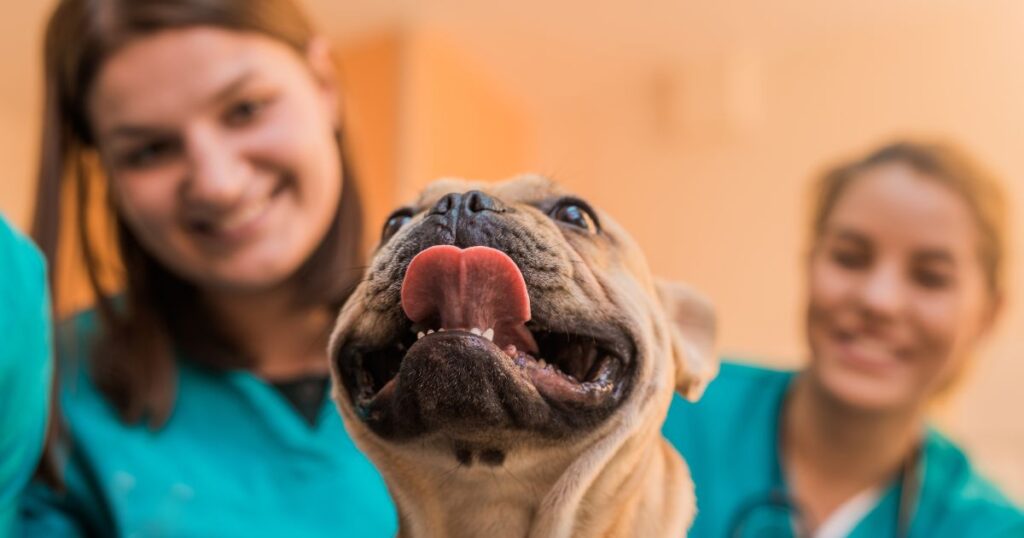
Conclusion
Dealing with Patellar Luxation can be challenging, but with the right knowledge and care, your Frenchie can lead a happy and healthy life. Remember, early detection and treatment can make a significant difference, so don’t hesitate to consult with your vet if you notice any changes in your Frenchie’s mobility. With love and care, our Frenchies can overcome this hurdle and continue to bring joy and companionship to our lives.
Disclaimer: This article is intended for informational purposes only. It’s not a substitute for professional veterinary advice, diagnosis, or treatment. Always seek the advice of your veterinarian or other qualified health provider with any questions you may have regarding a medical condition.
For more information on French Bulldog health and care, check out these articles: French Bulldog Health and Care and French Bulldog health issues.
Also see my previous posts: French Bulldog Hemivertebrae and French Bulldog Intervertebral Disc Disease
Frequently Asked Questions
Do French Bulldogs get luxating patella?
Yes, French Bulldogs are one of the breeds that are more prone to developing luxating patella due to their genetic makeup and physical characteristics.
What is patellar luxation in French Bulldogs?
Patellar luxation in French Bulldogs is a condition where the kneecap (patella) dislocates or moves out of its normal position. This can cause discomfort and mobility issues.
Can a dog with luxating patella heal on its own?
In mild cases, a dog with a luxating patella may not require surgery and can manage with physical therapy and weight management. However, in severe cases, surgery may be necessary.
How long can a dog live with luxating patella?
A dog with a luxating patella can live a normal lifespan with the right treatment and management. The condition itself doesn’t reduce a dog’s lifespan, but it can affect their quality of life if not managed properly.
Should I walk my dog with luxating patella?
Yes, but it’s important to keep walks controlled and avoid activities that could exacerbate the condition. Consult with your vet for specific exercise guidelines.
Are dogs in pain with luxating patella?
Yes, a luxating patella can cause discomfort and pain, especially if the condition is severe or left untreated.
How do you exercise a dog with a luxating patella?
Exercises should be low-impact and controlled. Swimming and controlled walks can be beneficial. Always consult with your vet before starting any new exercise regimen.
How do you massage a luxating patella dog?
Massaging can help, but it should be done by a professional or under their guidance to avoid causing further injury. Your vet can guide you on the correct techniques.
Can luxating patella get worse?
Yes, if left untreated, luxating patella can worsen over time and lead to other complications like arthritis.
Can luxating patella correct itself?
In very mild cases, the kneecap may return to its normal position on its own. However, in most cases, treatment is necessary to correct the condition.
Is luxating patella painful?
Yes, luxating patella can cause pain, especially when the kneecap dislocates. The level of pain can vary depending on the severity of the condition.
What is the best treatment for luxating patella in dogs?
The best treatment depends on the severity of the condition. Non-surgical treatments like physical therapy and weight management can be effective in mild cases. In severe cases, surgery may be required. Always consult with your vet for the best treatment plan for your dog.
Further Reading
Three-dimensional motion of the patella in French bulldogs …
